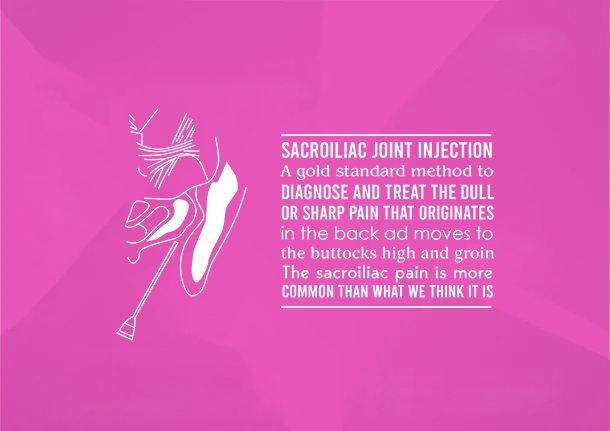

Treatments
ABDOMEN & PELVIC PAIN

Sacroiliac Joint Injection
What is Sacroiliac joint and why do I need a Sacroiliac joint injection?
The sacroiliac joints (SIJ) are the large joints of the low back where the pelvis joins the spine. SIJ injection is indicated for patients suffering with sacroiliac joint dysfunction or arthritis.
What is Sacroiliac joint dysfunction?
Sacroiliac joint dysfunction is an injury or inflammation of the joint, which may cause pain in the lower back, buttocks and sometimes groin and legs. Patients often relate a history of trauma such as a fall on the buttocks or a motor vehicle accident. Pain may also begin after simple twisting motions that combine bending forward, tilting the pelvis, or twisting the trunk as in a golf swing or bending and reaching sideways to pick an object off the floor.
How is a Sacroiliac injection is performed?
At Atlas Pain Care, you will be asked to lie on your stomach in the procedure room. The skin over the joint is cleaned with antiseptic solution and is injected with local anaesthetic, after which the sacroiliac joint injection is performed under X-ray/ultrasound guidance. The procedure usually takes 15-20 minutes. The injection works for a few months, but when it lasts only for a brief while, a radiofrequency ablation could be done to provide a lasting relief. The interventional treatment is followed by an intense recovery program that includes exercises, lifestyle advice and psychological strategies.
What are the risks associated with sacroiliac joint injection?
It is a safe procedure with minimal side effects. You may have increased pain for a few days after the injection, including localised pain at the injection site. There is a remote risk of bleeding, infection, nerve injury or an allergic reaction to the medications used.
Please read our FAQ section to know more about the do's and don'ts prior to and after the procedure.

